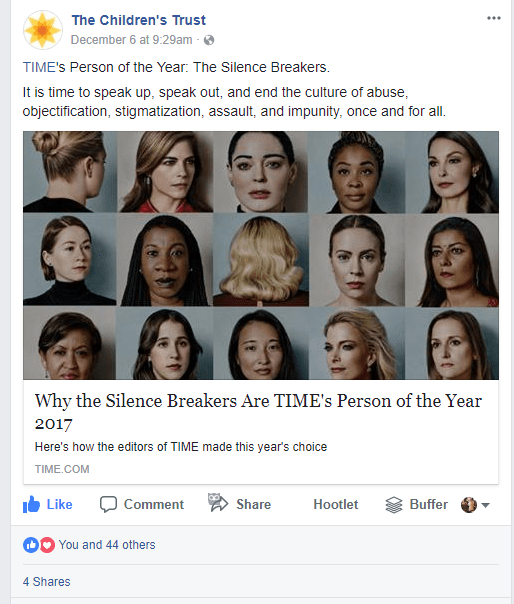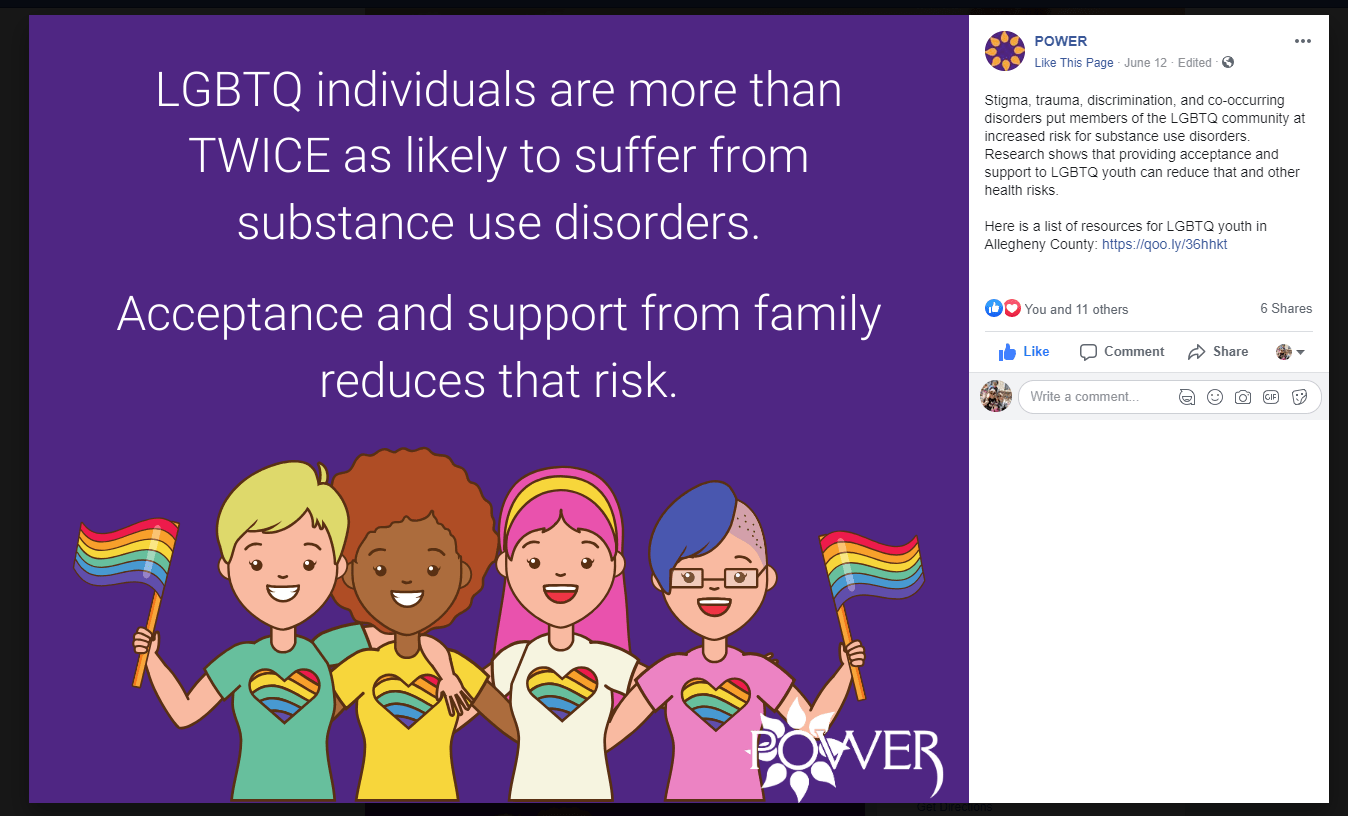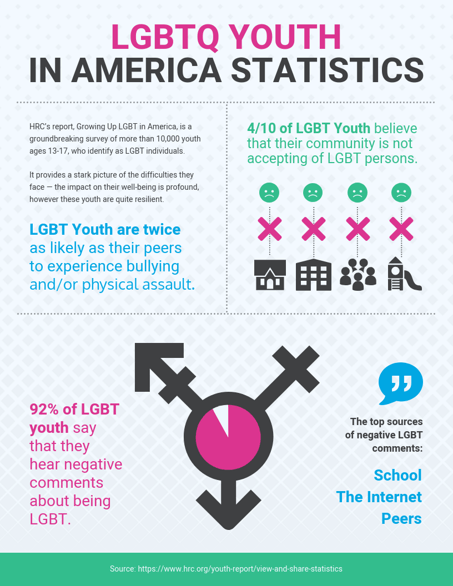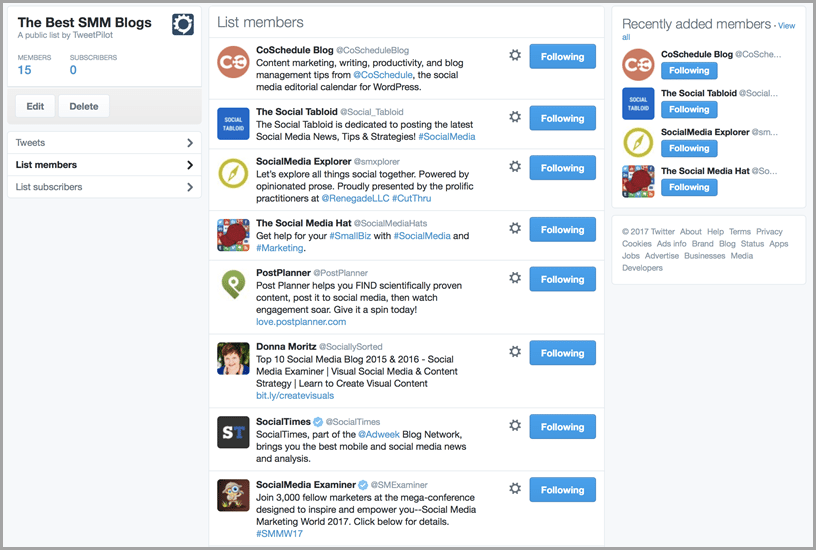The most effective and efficient nonprofit social media managers know that hand-crafting every piece of social media content from scratch is not practical, nor is it realistic.
We need to become content curators and have our eyes and ears open for outside content that could be relevant and interesting to our audience.
Content curation is the act of collecting, filtering, and sharing the best information on a specific topic for a specific audience.
Compare social media content curation to the work of a museum curator.
Museum art curators choose a theme for an exhibit, they select the best paintings to fit that theme, they annotate the paintings, and display them in a way that makes sense to the consumer.
A good content curator continually seeks, makes sense of, and shares the best and most relevant content on a particular topic.
They add their own thoughts and spin to the post, explaining why they selected to share it with the community.
It’s not as much about spraying out links to articles as you come across them – it’s about finding relevant materials amid the noise and clutter online, organizing it, and adding your perspective so it adds even more value to your audience.
Here are my top content curation strategies to further educate and engage your community by keeping the social media machine fresh and relevant.
Benefits of curating content for your audience
It build relationships. Expert Heidi Cohen who says that “Like sharing a bottle of fine wine with friends, content curation enhances your relationships.”
It saves time. Your brand can’t be the expert on everything in its niche but with content curation it can seem like it is.
It helps your busy audience! They trust you to provide them with vetted information.

How to create your content curation plan
1) Employ social listening strategies to keep tabs on your audience’s interests.
Social listening is not simply monitoring notifications and mentions of your organization across the social web.
Effective social listening analyzes the conversations and trends happening not just around your specific organization, but around your industry, cause, and issue and then using those insights to make better marketing decisions.
Listening brings you into the larger conversation and context around your issue.
It allows you to gain a deeper insight into your audience, what they talk about, what they care about, and how they talk about these issues.
Having a social listening strategy for your marketing will show you the vocabulary, terminology, and language that your audience uses so that you can then craft your communications appropriately.

Employ social listening strategies to keep tabs on your audience’s interests.
Some digital dashboards for social listening include:
- HootSuite
- Meltwater
- Mention.com
- Attentive.ly
- Google Alerts
2) Keep a list of topics your audience will be interested in.
To avoid overwhelm, hone in and be laser-focused on your online community’s characteristics, needs, and preferences.
When evaluating whether or not to share an article or video from an outside source, ask the following questions:
- Is this adding to my audience’s knowledge of, and education on the issue?
- Is this a topic of relevance and interest?
- What are they getting out of this?
- What do they want to get out of this?
- What do they hope to learn?
- How do they want to feel?
3) Comment on current events and news.
Share relevant news stories or create your own to keep your community informed about the issue you care about.
Sign up for Google Alerts, free emails that you receive daily or weekly featuring the latest news on a topic of your choosing.
Sign up to get a Google Alert for your cause, for example, “domestic violence,” “wetlands preservation,” or “animal abuse”.
You should also set up a news alert for your organization’s name and the city, state, or region that you serve.
When you come across an article or a news story that would be of interest to your audience, think about how you can thoughtfully and purposefully add to the discussion.
Choose an article or blog post (or video or photo, etc.) and write two paragraphs about the issue and explain clearly why your audience should pay attention.
Make sure to cite the original source and link back to the article.
A pro tip is to focus not just on your organization’s name and industry, but track competitor brands, collaborators and partners, industry buzzwords, relevant hashtags, and media outlets and reports that cover your issue.


4) Share infographics and visual data on the issue.
Along with creating your own graphics, search Pinterest or Google for your issue plus the word “infographic” – i.e. “transgender rights infographic” or “food insecurity infographic”.
Find the source of the infographic that you want to use, and contact them to see if you can share it publicly.
When you share it, be sure to add your unique thoughts and perspective, summing up the most interesting data points of the infographic.
Make sure to cite the original source and link back to the original creator where possible.


5) Use content curation tools.
Free online tools Scoop.it and List.ly are great places to curate interesting information around a specific topic before sharing it on social networks.
Sign up for a free account on either site. Identify up to three topics that are relevant to your mission, your cause, and your audience.
With Scoop.it, you can post a link to your desired social media platform and then add your own insight.
You can then share it to all your social media sites for further exposure.
6) Make lists of thought leaders to follow.
Make a list of five-10 thought leaders in your space that you follow.
Subscribe to their email newsletters, YouTube channels, their blogs, and follow them on social media.
To cut down on the clutter on Twitter, make a list of your top 10 thought leaders using Twitter lists.
You can then refer to that list and filter out their tweets in your Twitter feed.
The key is to focus on those who provide you AND your audience with valuable content. When you are looking to fill in your editorial calendar, you can turn to this list to find information to share.
Effective content curation takes time and effort to do well.
However, it can be a perfect compliment to content creation efforts like writing a blog, sending out a regular email newsletter and posting regularly on social media.

Word of warning when curating!
Always and prominently identify the source of the article.
When possible, link to the original source.
Never reproduce the story in its entirety.
Never use all or even most of the articles from a single source.
When possible, provide some context for, or comment on, the materials you share.
Maintaining a balance social media diet means:
Use content curation to shake up a stagnant content marketing strategy and wake up your audience.
82% of marketers embraced sharing a mix of their own and other people’s content on their social channels.
Start collecting and sharing your best stories!

